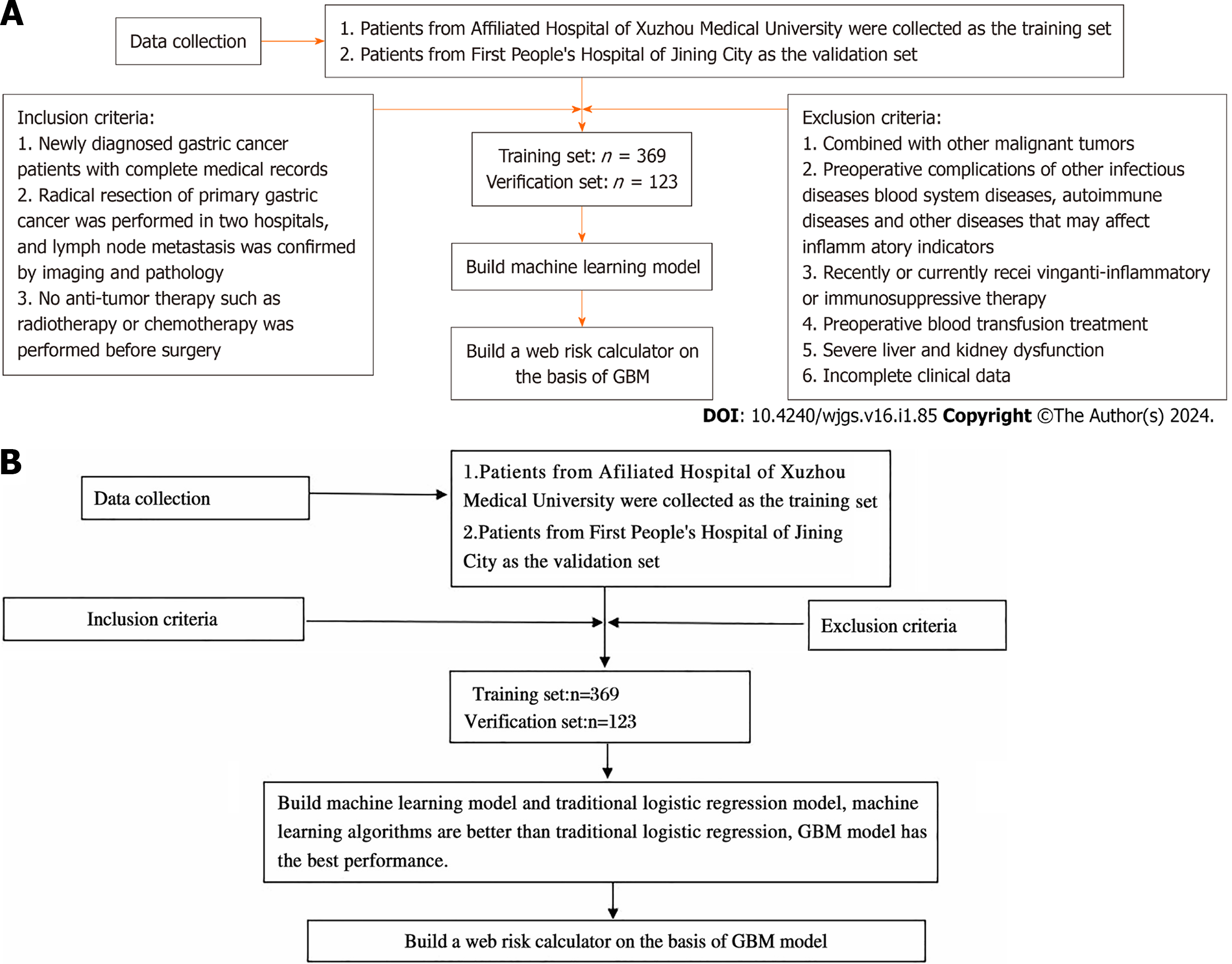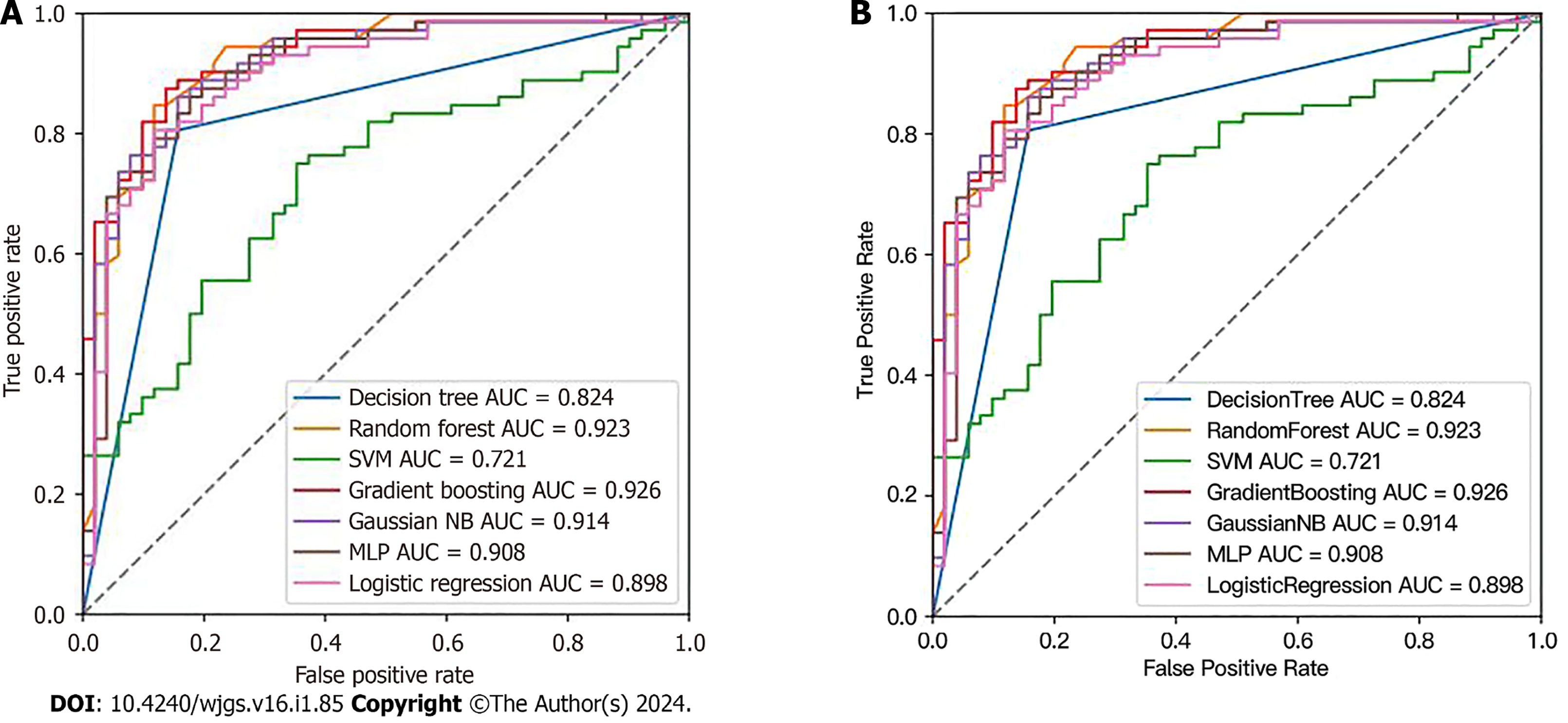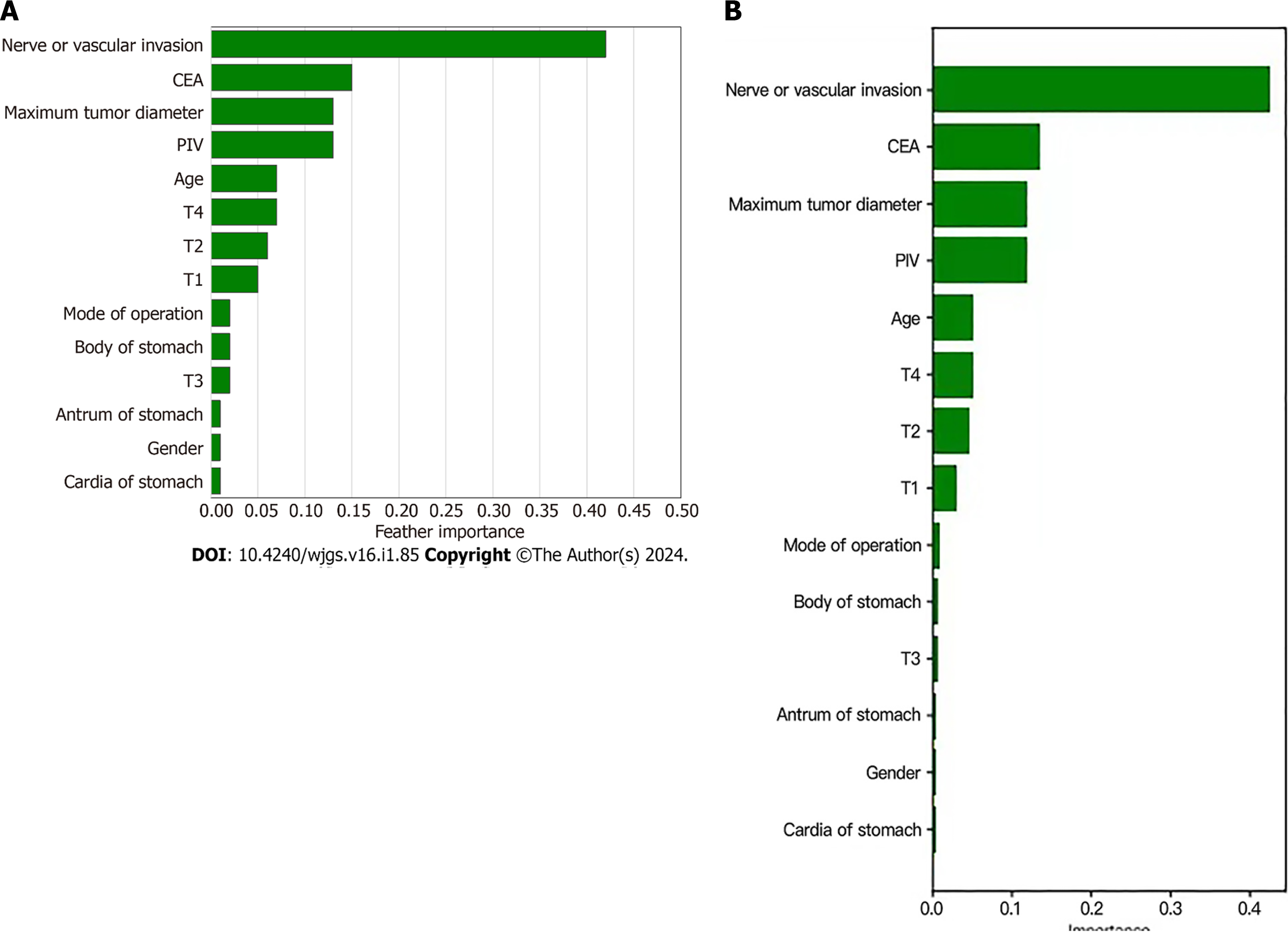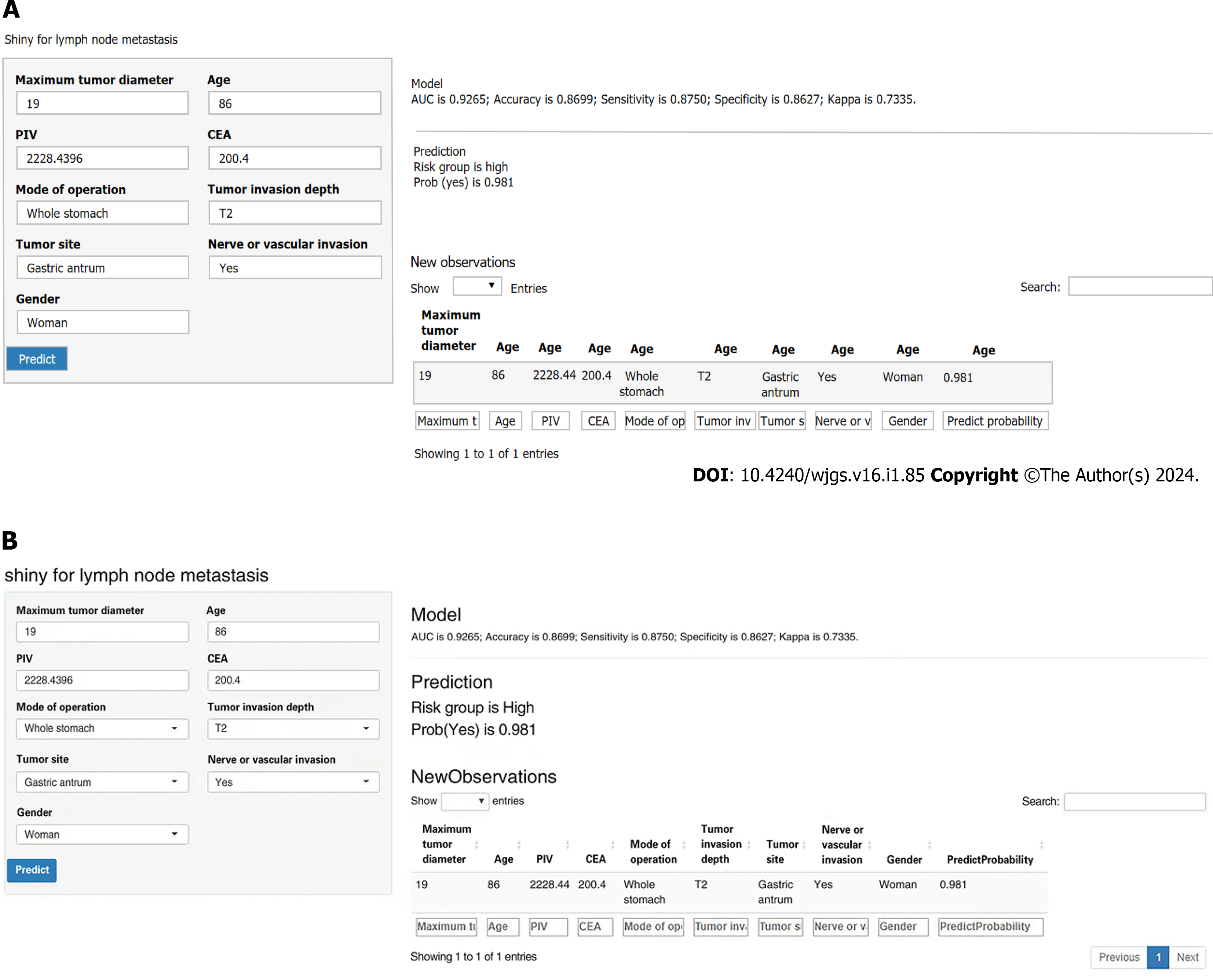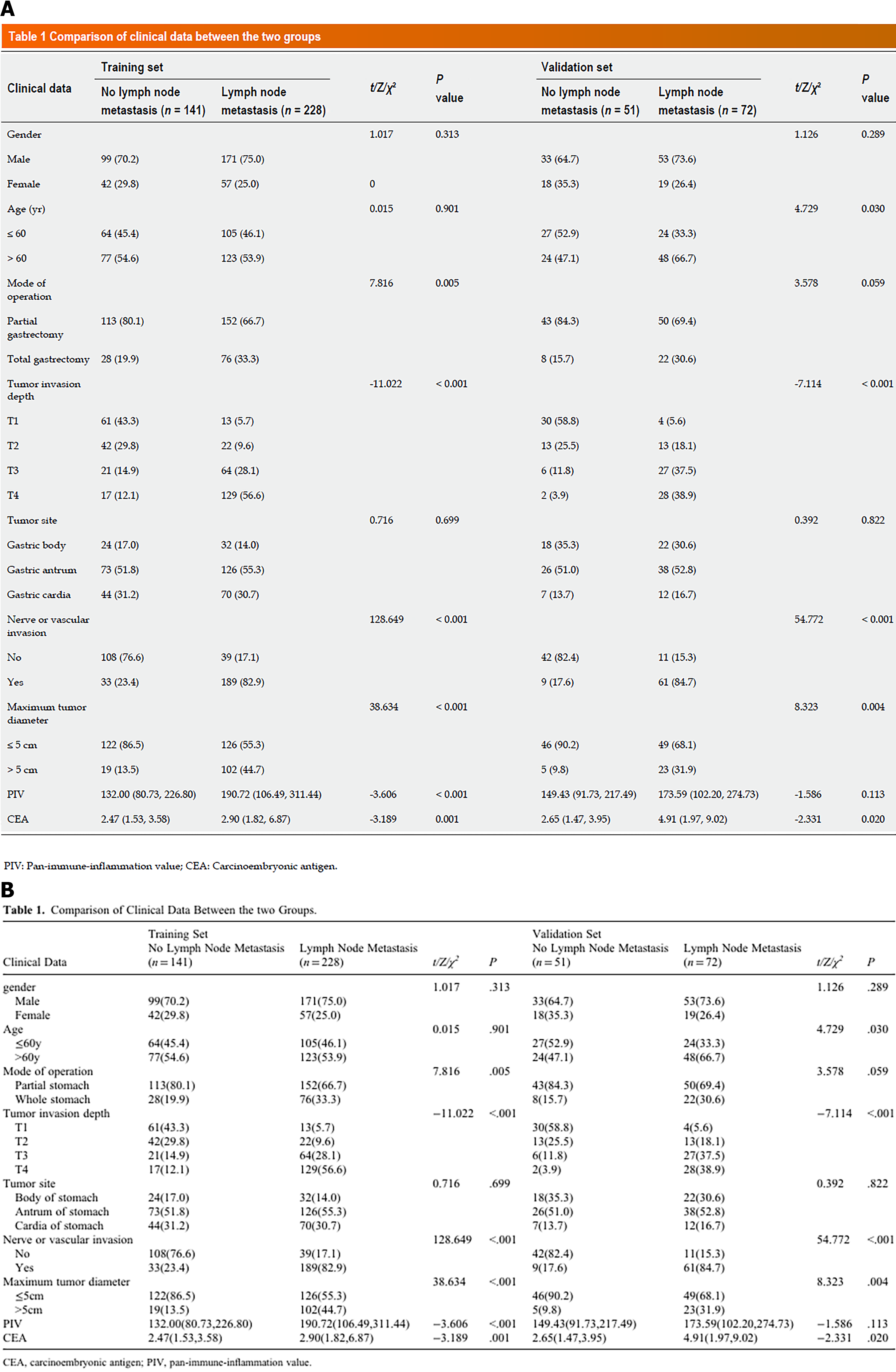Published online Jan 27, 2025. doi: 10.4240/wjgs.v17.i1.101330
- This retracts the article "Predictive value of machine learning models for lymph node metastasis in gastric cancer: A two-center study".
Revised: November 5, 2024
Accepted: October 28, 2024
Published online: January 27, 2025
Processing time: 107 Days and 11.8 Hours
In this retraction note, we describe the World Journal of Gastrointestinal Surgery
Core Tip: A reader found that an article published in World Journal of Gastrointestinal Surgery (WJGS) is highly similar to an article published in another journal. After careful investigation, the Editorial Office of WJGS decided to retract this article.
- Citation: Yan JP, Wang JL. Retraction note: Predictive value of machine learning models for lymph node metastasis in gastric cancer: A two-center study. World J Gastrointest Surg 2025; 17(1): 101330
- URL: https://www.wjgnet.com/1948-9366/full/v17/i1/101330.htm
- DOI: https://dx.doi.org/10.4240/wjgs.v17.i1.101330
Retraction note: Lu T, Lu M, Wu D, Ding YY, Liu HN, Li TT, Song DQ. Predictive value of machine learning models for lymph node metastasis in gastric cancer: A two-center study. World J Gastrointest Surg 2024; 16(1):
This article[1] has been retracted because a reader found high similarity to an article published in another journal[2]
The Editorial Office of World Journal of Gastrointestinal Surgery (WJGS) recently received a letter from a reader stating that an article published in WJGS is highly similar to an article published in another journal. Specifically, the reader stated, “I found that an article in your journal is highly similar to an article in another journal, and I suspect that the authors published a study in multiple journals”.
In response, we conducted a thorough investigation of the matter. We found the abstracts of the two articles to be highly similar; please see below:
WJGS: “Data of a total of 369 patients who underwent radical gastrectomy at the Department of General Surgery of Affiliated Hospital of Xuzhou Medical University (Xuzhou, China) from March 2016 to November 2019 were collected and retrospectively analyzed as the training group. In addition, data of 123 patients who underwent radical gastrectomy at the Department of General Surgery of Jining First People’s Hospital (Jining, China) were collected and analyzed as the verification group. Seven ML models, including decision tree, random forest, support vector machine (SVM), gradient boosting machine, naive Bayes, neural network, and logistic regression, were developed to evaluate the occurrence of lymph node metastasis in patients with gastric cancer. The ML models were established following ten cross-validation iterations using the training dataset, and subsequently, each model was assessed using the test dataset. The models’ performance was evaluated by comparing the area under the receiver operating characteristic curve of each model. Among the seven ML models, except for SVM, the other ones exhibited higher accuracy and reliability, and the influences of various risk factors on the models are intuitive. The ML models developed exhibit strong predictive capabilities for lymph node metastasis in gastric cancer, which can aid in personalized clinical diagnosis and treatment”.
TCRT: “Data of a total of 369 patients who underwent radical gastrectomy in the Department of General Surgery of Affiliated Hospital of Xuzhou Medical University (Xuzhou, China) from March 2016 to November 2019 were collected and retrospectively analyzed as the training group. In addition, data of 123 patients who underwent radical gastrectomy in the Department of General Surgery of Jining First People's Hospital (Jining, China) were collected and analyzed as the verification group. Besides, 7 ML and logistic models were developed, including decision tree, random forest, support vector machine (SVM), gradient boosting machine (GBM), naive Bayes, neural network, and LR, in order to evaluate the occurrence of lymph node metastasis in patients with gastric cancer. The ML model was established following 10 cross-validation iterations within the training dataset, and subsequently, each model was assessed using the test dataset. The model's performance was evaluated by comparing the area under the receiver operating characteristic curve of each model. Compared with the traditional logistic model, among the 7 ML algorithms, except for SVM, the other models exhibited higher accuracy and reliability, and the influences of various risk factors on the model were more intuitive”.
In addition, the figures in the two articles are highly similar (Figure 1, Figure 2, Figure 3 and Figure 4).
Table comparison also suggested high similarity between the two articles (Figure 5 and Figure 6).
Moreover, a similarity check of this article to others via iThenticate software, suggested a high similarity between the two articles (62%; Figure 7).
When the WJGS Editorial Office contacted the authors concerning this issue, the Corresponding Author provided a timely response as follows: “The articles published in WJGS and TCRT are two different ones written together during the same period, using the same batch of data through different methods and with different article themes. When writing the article published in WJGS, we thought of previous articles on establishing traditional prediction models, which led to the idea of the article published in TCRT. Then, we considered using two methods to explore the topic of establishing models for clinical research using different methods. We hoped to explain our understanding of clinical modeling using different methodologies. Therefore, the article published in WJGS did not cite the research results published in TCRT. The article in TCRT was published before the article in WJGS, and this may lead to misunderstanding. But in reality, the two articles are independent of each other and start from different narrative perspectives. The article in WJGS focuses on the use of machine learning algorithms in data statistics, while the article in TCRT aims to compare two statistical methods. Therefore, the article in WJGS is a highly innovative article that is very meaningful for applying machine learning algorithms to clinical topics. These two articles contain some identical and similar contents. We are very sorry for our mistake and deeply ashamed.” The Corresponding Author's response agrees with our investigation conclusions re
In our opinion, there is clear evidence that Figure 1, Figure 2, Figure 3 and Figure 4 in the article published in WJGS[1] are the same as those in the article published in TRCT[2], and the degree of overlap with another paper has constituted duplicate publication. After careful consideration and according to the ethical constrains and policies of WJGS, we have decided to retract this published article in order to safeguard the overall quality of the content published in WJGS.
| 1. | Lu T, Lu M, Wu D, Ding YY, Liu HN, Li TT, Song DQ. Predictive value of machine learning models for lymph node metastasis in gastric cancer: A two-center study. World J Gastrointest Surg. 2024;16:85-94. [RCA] [PubMed] [DOI] [Full Text] [Full Text (PDF)] [Cited by in CrossRef: 2] [Cited by in RCA: 3] [Article Influence: 3.0] [Reference Citation Analysis (0)] |
| 2. | Lu T, Fang Y, Liu H, Chen C, Li T, Lu M, Song D. Comparison of Machine Learning and Logic Regression Algorithms for Predicting Lymph Node Metastasis in Patients with Gastric Cancer: A two-Center Study. Technol Cancer Res Treat. 2024;23:15330338231222331. [RCA] [PubMed] [DOI] [Full Text] [Cited by in RCA: 5] [Reference Citation Analysis (0)] |









